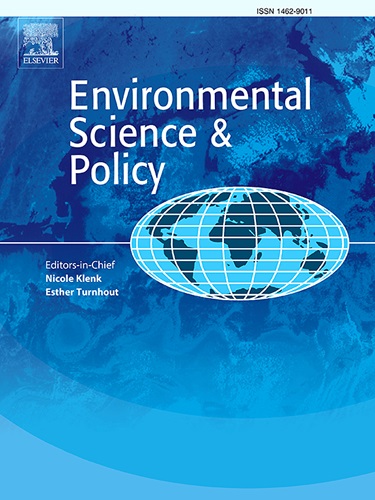利用增强现实(AR)为决策者体现气候变化的影响:阿拉斯加西部气候威胁文化遗产地的案例研究
IF 5.2
2区 环境科学与生态学
Q1 ENVIRONMENTAL SCIENCES
引用次数: 0
摘要
三维(3-D)扫描和增强现实(AR)是常见的工具,可以将用户置于受气候变化威胁的景观中。结合快速保存危险位置数据和吸引公众的能力,激光雷达和摄影测量方法迅速得到普及;然而,工业质量的三维扫描方法往往是昂贵和耗时的。最近,苹果公司在他们的许多移动设备上增加了商业级激光雷达扫描,使研究人员有机会使用低成本和低专业知识的方法来生成环境风险站点的3d扫描,从而可以轻松地与公众、决策者和政府代表在移动设备上进行互动。在这里,我们认为收集环境受威胁地区的激光雷达数据是一种有用的方法,允许决策者使用AR体现气候变化对任何给定保护案例的真实影响,同时也为研究人员提供数据,以最小的空间误差(<2 cm)进行时间序列比较。我们讨论的案例展示了使用iPad Pro 12在阿拉斯加西海岸使用免费应用程序(Scaniverse)对处于危险中的文化遗产遗址进行3d扫描,该应用程序可以在模型托管平台(SketchFab)中使用。我们展示了AR扫描如何用于创建准确的时间序列数据,并结合起来提供身临其境的可访问体验。通过建立与“地点”的联系,将气候变化的影响体现在环境风险场地上,可以增加公众的依恋,包括气候适应资金和政策决策者。本文章由计算机程序翻译,如有差异,请以英文原文为准。
Embodying the impact of climate change for decision makers using augmented reality (AR): A case study of climate-threatened cultural heritage sites in Western Alaska
Three-dimensional (3-D) scans and augmented reality (AR) are common tools that can place the user into a landscape threatened by climate change. Combining the ability to rapidly preserve at-risk location data and entice the public, LiDAR and photogrammetric methods have quickly gained popularity; however, industry quality 3-D scanning methods are often costly and time-consuming. Recently, Apple has added commercial-grade LiDAR scanning to many of their mobile devices, giving researchers an opportunity to use a low cost and low expertise method to produce 3-D scans of environmentally at-risk sites that can easily engage with the public, decision makers, and government representatives on mobile devices. Here, we argue the usefulness of collecting LiDAR data of environmentally-threatened localities as a way of allowing decision makers to embody the true impact of climate change on any given conservation case using AR while also providing researcher data for time-series comparison with minimal spatial error (<2 cm). We discuss cases showcasing the use of an iPad Pro 12 to take 3-D scans of at-risk cultural heritage sites on the western coast of Alaska using a free app (Scaniverse) that can be employed in a model hosting platform (SketchFab). We show how AR scans can both be used to create accurate time-series data and be incorporated to provide an immersive and accessible experience. Embodying the impacts of climate change on an environmentally at-risk site may increase attachment for the public, including climate adaptation funding and policy decision makers, by establishing a connection to “Place”.
求助全文
通过发布文献求助,成功后即可免费获取论文全文。
去求助
来源期刊

Environmental Science & Policy
环境科学-环境科学
CiteScore
10.90
自引率
8.30%
发文量
332
审稿时长
68 days
期刊介绍:
Environmental Science & Policy promotes communication among government, business and industry, academia, and non-governmental organisations who are instrumental in the solution of environmental problems. It also seeks to advance interdisciplinary research of policy relevance on environmental issues such as climate change, biodiversity, environmental pollution and wastes, renewable and non-renewable natural resources, sustainability, and the interactions among these issues. The journal emphasises the linkages between these environmental issues and social and economic issues such as production, transport, consumption, growth, demographic changes, well-being, and health. However, the subject coverage will not be restricted to these issues and the introduction of new dimensions will be encouraged.
 求助内容:
求助内容: 应助结果提醒方式:
应助结果提醒方式:


